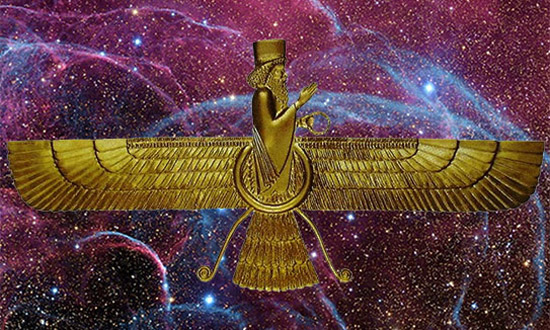 |
Great Red Spot on Jupiter * Wielka Czerwona Plama na Jowiszu
|
The Great Red Spot (GRS) is a persistent anticyclonic storm,
22° south of Jupiter's equator; observations from Earth establish a minimum storm lifetime of 350 years. A storm was described as a "permanent spot" by Gian Domenico Cassini after observing the feature in July 1665 with his instrument-maker Eustachio Divini.
Wielka Czerwona Plama – ogromny stały antycyklon od co najmniej 350 lat wiejący na Jowiszu, 22° na południe od równika. Burza jest na tyle duża, że można ją obserwować z Ziemi za pomocą amatorskich teleskopów. Jako pierwszy zobaczył ją brytyjski fizyk i wynalazca Robert Hooke w 1664 roku, następnie rok później Gian Domenico Cassini.
 |
| Jupiter and Io * Jowisz i księżyc Io |
Io is the innermost of the four Galilean moons of the planet Jupiter. It is the fourth-largest moon, has the highest density of all the moons, and is the driest known object in the Solar System. It was discovered in 1610 and was named after the mythological character Io, a priestess of Hera who became one of Zeus's lovers. With over 400 active volcanoes, Io is the most geologically active object in the Solar System. This extreme geologic activity is the result of tidal heating from
friction generated within Io's interior as it is pulled between Jupiter
and the other Galilean satellites — Europa, Ganymede and Callisto. Several volcanoes climb as high as 500 km (300 mi) above the surface. Io's surface is also
dotted with more than 100 mountains that have been uplifted by
extensive compression at the base of Io's silicate crust. Some of these
peaks are taller than Mount Everest.
Io – trzeci co do wielkości księżyc Jowisza, z grupy księżyców galileuszowych i czwarty co do wielkości satelita w Układzie Słonecznym. Charakteryzuje się niezwykle silną aktywnością wulkaniczną. Został odkryty w 1610 r i nazwany na cześć mitologicznej postaci Io, kapłanki bogini Hery, która miała romans z Zeusem. Posiada przeszło 400 aktywnych wulkanów, jest przez to najaktywniejszym obiektem w Układzie Słonecznym. Ta wysoka aktywność geologiczna jest powiązana z bliską obecnością pozostałych księżyców Jowisza: Europą, Ganimedesem oraz Kallisto, jak również odległością od gazowej planety. Kilka wulkanów wznosi się na wysokość 500 km nad powierzchnią księżyca. Io jest również upstrzona ponad 100 górskich-krzemianowych szczytów. Niektóre z tych szczytów są większe niż Mount Everest.
 |
"Jupiter & Europa shadow transit"
(Cień księżyca Europy przechodzącego na tle Jowisza)
by John Chumack |
 |
| Auroras at both poles of Jupiter * Zorze polarne na obu biegunach Jowisza |
 |
Water vapor detected in the atmosphere of a hot Jupiter
Para wodna wykryta w atmosferze gorącego Jowisza | |
Water vapor has been detected in the atmosphere of one of the first alien planets ever identified by astronomers. Advances in the technique used to scan the atmosphere of this "hot
Jupiter" could help scientists determine how many of the billions of
planets in the Milky Way contain water like Earth, researchers said.
The exoplanet Tau Boötis b was discovered in 1996, when the search for
worlds outside our solar system was just kicking off. At about 51
light-years away, Tau Boötis b is one of the nearest known exoplanets to
Earth. The planet is considered a "hot Jupiter" because it is a massive
gas giant that orbits close to its parent star. [
More at*]
 |
| Milky Way & Aurora in Maine Photo by Mike Taylor |
 |
| The Milky Way arching over the Badlands of South Dakota, Randy Halverson |
 |
| Radio Telescope and Southern Sky |
 |
Venus, Zodiacal Light, and the Galactic Center
Wenus rozświetlona zodiakalnym światłem na tle Centrum Galaktyki |
_________________________________________
Previous parts (Poprzednie części serii):
Część (Part) VI - TUTAJ (HERE)
























Komentarze
Prześlij komentarz